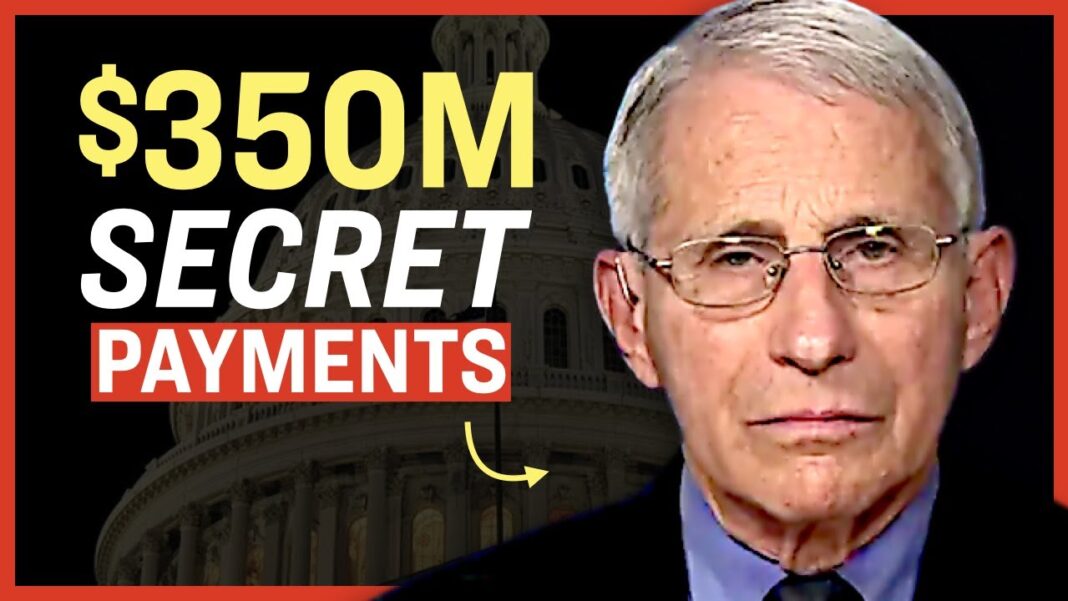While almost everyone in the news media is busy talking about Roe vs Wade or Ukraine, one of the most scandalous stories in modern history is going un-noticed. It turns out that Dr. Anthony Fauci and hundreds of other scientists working for U.S. government medical agencies, as well as the agencies themselves have been paid over $350-million dollars in royalties by pharmaceutical companies, but its not just what we now know that should have your attention its the part that these agencies are still hiding.
Spearheaded by Emmy Award-winning investigative journalist, Ben Swann, SOVREN is made by creators for creators.
Fauci/NIH Paid $350 Million In Royalties – powered by sovren.media

Watchdog says NIH has ‘taxpayers in the dark’ as scientists receive millions in royalties
WASHINGTON (TND) — A watchdog investigation found that scientists at the National Institutes of Health received royalty payments from third-party payers, such as pharmaceutical manufacturers, totaling roughly $134 million between 2009 and 2014.
The watchdog group Open The Books estimates that scientists at the NIH, including Dr. Anthony Fauci and former Director Francis Collins, received a total of $350 million in these kickback-style payments for their work on various experimental treatments over a 10-year period.
In 2005, following an Associated Press investigation, the NIH expressed concern over the royalty payments being a potential conflict of interest.
Even Dr. Fauci “said that he felt it was inappropriate to receive payment and donated the entire amount to charity,” according to the NIH.
The personal royalties are legal, but there is an apparent lack of transparency around them. It wasn’t until after the AP investigation in 2005 that the NIH created a policy to disclose the payments.
The National Desk spoke to Open The Books’s Adam Andrzejewski, who explained how it took a federal lawsuit just to receive access to the disclosures that NIH began making in 2005.
Even then, important information on the disclosure documents was redacted, such as who the payments came from and how much was doled out. Open The Books was only able to verify a topline number for the total amount given to NIH scientists via these royalty payments, as well as the total number of payments given to each scientist, Andrzejewski told TND.
This is a gatekeeping at odds with the spirit and perhaps the letter of open-records laws,” Andrzejewski wrote in his investigation.
Andrzejewski noted to TND how the agency is “slow-walking” the release of its disclosure documents relating to the royalty payments that Open The Books had to sue to access after its FOIA request was ignored.
According to Andrzejewski, the NIH admitted to holding 3,000 pages worth of disclosure information related to the royalty payments, but is only releasing 300 pages per month.
NIH is using taxpayer money to keep taxpayers in the dark. The agency refused to respond to our FOIA request. Now, NIH is using expensive taxpayer-paid litigation to slow-walk production and redact key information — refusing to show who paid the royalty and the amount paid to each individual scientist,” Andrzejewski told TND.
Last year, amid the coronavirus pandemic, the NIH gave out approximately $30 billion in government grants to roughly 56,000 recipients.
With tens of billions of dollars in grant-making at NIH and tens of millions of royalty dollars from third-party payors flowing back into the agency each year, NIH needs to come clean with the American people and open the books,” Andrzejewski told TND. “We need to be able to follow the money. Every single outside payment to a government scientist could be a conflict of interest.
TND reached out to the NIH for comment, but did not hear back. If a response is received, it will be added to this story.
By Alec Schemmel | The National Desk









